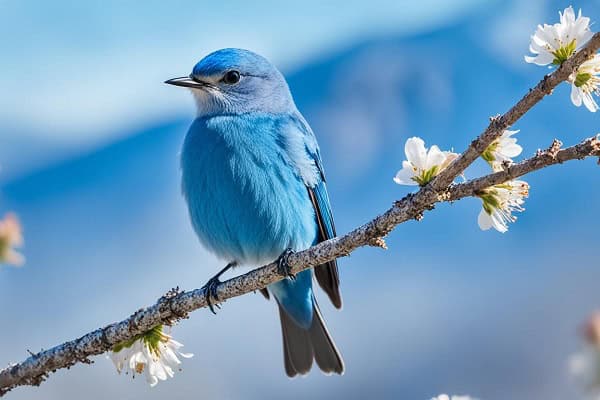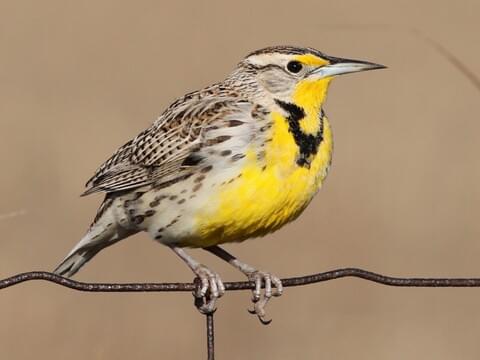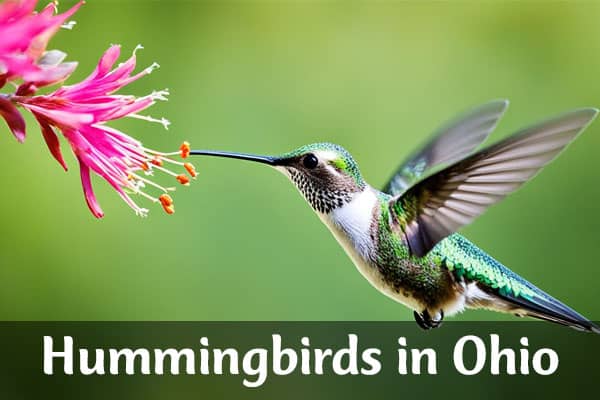Mountain Bluebird – Facts, Diet, Habitat & Pictures
Ever curious about the Mountain Bluebird? These stunning North American birds are known for their bright blue feathers and interesting ways. What makes them so captivating, and what can we learn from them? Let’s dive into the world of the Mountain Bluebird and discover the secrets behind their charm.
Captivating Blue Feathers
Structure and Coloration
The mountain bluebird’s blue color comes from its feather structure, not pigments. Each feather has a special layer that absorbs most colors but reflects blue. This is why the birds look blue.
Adult males have a bright sky-blue look, with darker backs and lighter bellies. Females and young birds have gray-brown feathers with a bit of pale blue on their wings and tail. This shows how different the bluebird plumage can be, thanks to the mountain bluebird feathers and their bluebird coloration.

The mountain bluebird’s blue color is really eye-catching. It draws in birdwatchers and nature lovers. This color is not just pretty; it’s also important for the birds’ mating and social life.
Mountain Bluebird Habitat
The mountain bluebird is a resilient species that thrives in various habitats across the western United States. They look for open areas with short grasses, shrubs, and trees during the breeding season. These areas are up to 12,500 feet above sea level.
You’ll often find them in prairie and tundra edges, meadows, and sagebrush flats. They also like alpine hillsides, pastures, and areas that have been recently burned or clearcut. In winter, they move to lower elevations. They can be seen in meadows, hedgerows, prairies, and flat grasslands with trees and bushes.
They also visit pinyon-juniper and oak-juniper woodlands, and agricultural areas in the winter. While they are adaptable, they avoid the most arid desert habitats. Their preferred habitats offer the right mix of open space, vegetation, and nesting sites.
| Habitat Type | Breeding Season | Winter Season |
|---|---|---|
| Open Areas | Prairie and tundra edges Meadows Sagebrush flats Alpine hillsides Pastures Burned or clearcut areas | Meadows Hedgerows Prairies Flat grasslands with scattered trees and bushes |
| Woodlands | Roadsides (nesting in cavities facing away from road) | Pinyon-juniper woodlands Oak-juniper woodlands |
| Other Habitats | Up to 12,500 feet above sea level | Agricultural areas |
The mountain bluebird’s ability to adapt and find suitable mountain bluebird habitat, bluebird breeding habitat, and bluebird winter habitat helps it thrive in many environments in the western United States.
Diet and Feeding Habits
The Mountain Bluebird’s diet is closely linked to its high-altitude home. In the breeding season, they mainly eat insects. They love beetles, grasshoppers, and caterpillars.
They are great at catching insects in mid-air. This skill helps them live in places with few trees and shrubs.
Insect-based Diet
Mountain Bluebirds eat about 4 grams of food daily, which is 12% of their body weight. Their diet of insects is key during breeding. It gives them the energy and nutrients they need for their active life and raising young.
As seasons change, so does their diet. In winter, they eat small fruits, seeds, and insects. This helps them get the nutrients they need when insects are scarce.
Adult Mountain Bluebirds also eat spiders. But nestlings get a diet rich in beetles and grasshoppers from their parents.

One special thing about Mountain Bluebirds is how they can hover to find insects. This skill lets them live in areas with few trees and shrubs. It makes them different from other bluebirds that often perch to find food.
Mountain Bluebird
The mountain bluebird is a bird with a beautiful blue color and interesting ways. These birds are small and sturdy, with round heads and thin bills. They usually stay with one partner during the breeding season and sometimes longer.
The males look for places to nest, but the females decide where to build their homes. Building a nest can take more than a week. The female lines the nest with dry grass and other plants, making a cup for 4-8 eggs.
Both parents defend their territory, but the male guards the nest edges more. After the eggs hatch, the male takes care of the young while the female starts a new nest. This helps the species grow quickly.
Mountain bluebirds are not considered endangered, with about 4.6 million in the world. But, their numbers have dropped by 26% from 1966 to 2014. This is due to industrial noise from gas wells, which harms their health and breeding.
They also face competition for homes with other birds like Western and Eastern bluebirds. This makes it hard for them to find a good place to nest.
Despite these problems, the mountain bluebird is still loved by birdwatchers and nature lovers. Its beauty and interesting ways make it special. Learning about their nesting and conservation helps us protect these amazing birds for the future.
Check Our Previous Articles
Frequently Asked Questions
Q1: What is the nickname for the Mountain Bluebird?
The nickname is “the blue gem of the West.”
Q2: Why is the Mountain Bluebird important to Idaho?
It is the state bird of Idaho, symbolizing the state’s natural beauty.
Q3: What is the Mountain Bluebird in California?
It is considered a rare visitor and is occasionally seen in California.
Q4: Why is the Mountain Bluebird Nevada’s state bird?
It represents the state’s natural heritage and is well-adapted to Nevada’s landscape.
Q5: What does the Mountain Bluebird symbolize?
It symbolizes joy, tranquility, and the beauty of the wilderness.
Conclusion
The mountain bluebird, with its stunning blue feathers, has always been a favorite in America. Their numbers have stayed steady, but we must keep working to protect them. This is crucial for their future.
Efforts like protecting their homes, providing nesting boxes, and watching their numbers help keep the mountain bluebird safe. They are important for our ecosystems. They help control insect populations and symbolize hope.
Recently, there have been fewer nesting attempts in Colorado and other areas. We need to understand why, like the issue with empty nest boxes. By tackling these problems, we can help the mountain bluebird thrive. This way, they can keep flying in our skies and inspiring us for years to come.
Thanks For Reading!!🥰🥰🥰







